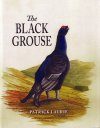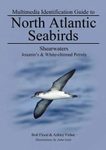By: Patrick Laurie(Author)
224 pages, 34 colour & 54 b/w illustrations, 4 colour distribution maps
![The Black Grouse The Black Grouse]()
Click to have a closer look
About this book
Customer reviews
Related titles
About this book
The Black Grouse is the first book to be written on this fascinating, severely declining species. Author Patrick Laurie's lively natural history is interwoven with his account of his on-going battle to reintroduce them on his farm in the Scottish Borders. His beautiful illustrations convey his passion for these vulnerable birds, so full of character, from their aggressive lekking behaviour to their desperate struggle to survive against nearly-impossible odds in modern Britain.
Customer Reviews
By: Patrick Laurie(Author)
224 pages, 34 colour & 54 b/w illustrations, 4 colour distribution maps
"With its chequered history in Britain and elaborate lekking displays, the black grouse Tetrao tetrix is one of our most fascinating species. It is also one of our most vulnerable birds having suffered a prolonged decline and loss of range. Conservation efforts to date have, sadly, had only limited success and a recent run of severe winters has exacerbated the problems it faces, particularly for the fragmented population in the uplands of northern England. Its current scarcity makes it easy to forget that the black grouse was once widespread across much of the lowlands as well as in the upland landscapes where it remains today. I was fascinated to be reminded that it was once considered to be a significant pest in new plantations and was controlled by foresters to keep the numbers down. It would once have been a far more familiar bird for birdwatchers and hunters alike. While both groups will find much of interest in this excellent book, it appears to be aimed primarily at those with an interest in shooting.
The author is clearly an expert on the history of game shooting in Britain. He was spurred on to research this species in particular by thoughts of trying to encourage its return as a potential quarry species to his family farm in Dumfries & Galloway. Much of the book is taken up by discussions about the extent to which the black grouse was exploited by hunters in the past. For a time its spectacular plumage and rapid escape flights made it highly sought-after as a quarry species. However, a sustained decline in numbers as well as changes in sporting attitudes meant that it increasingly lost out to its smaller cousin. Rather than walking over expanses of open moorland to stalk birds, hunters increasingly preferred the less demanding option of waiting in a fixed position while groups of birds were driven towards them. Red grouse Lagopus lagopus are ideally suited to this whereas black grouse are apparently fickle, unpredictable and difficult to drive. On some estates they even came to be seen as a nuisance for their habit of joining up with groups of red grouse and encouraging them to fly strongly away from the guns.
The book is perhaps less authoritative, though no less interesting, when it comes to discussion of conservation aspects. The views are largely personal opinion rather than backed up by other sources, though they are convincing and well argued in the main. Detrimental changes to the landscape through increasingly intensive farming methods are covered in some detail. And I was intrigued by the suggestion that competition with reared and released common pheasants Phasianus colchicus might have been a contributory factor in the decline. Pheasants are a similar size to black grouse and there is likely to be a high degree of overlap in the diet so it is perhaps entirely plausible that there was some competition in areas where pheasants were released in large numbers.
The author has some interesting views about how best to restore black grouse populations. As well as work to improve habitat quality, he suggests that reintroductions of captive-bred birds may have a role to play, while accepting that efforts so far have been very disappointing. He has very strong views about the role played by predation and believes that increasing populations of birds of prey have not helped the black grouse. Again, he provides little in the way of supporting evidence though he admits to finding birds of prey 'rather cold and sinister' and notes that 'we sometimes forget that when a peregrine falcon Falco peregrinus performs a spectacular stoop and kills a bird, something dies.' As he is a strong advocate for country sports, I wasn't sure exactly what point he was trying to get across here.
The author's own sketches and evocative colour illustrations are used throughout the book. While this is very far from the last word on this enigmatic species, it is a well-written and thought-provoking book. It is particularly recommended for those with an interest in shooting or in the sometimes complicated politics behind the conservation of a bird held in high esteem by both birdwatchers and hunters."
- Ian Carter, www.britishbirds.co.uk, 14-11-2012






































